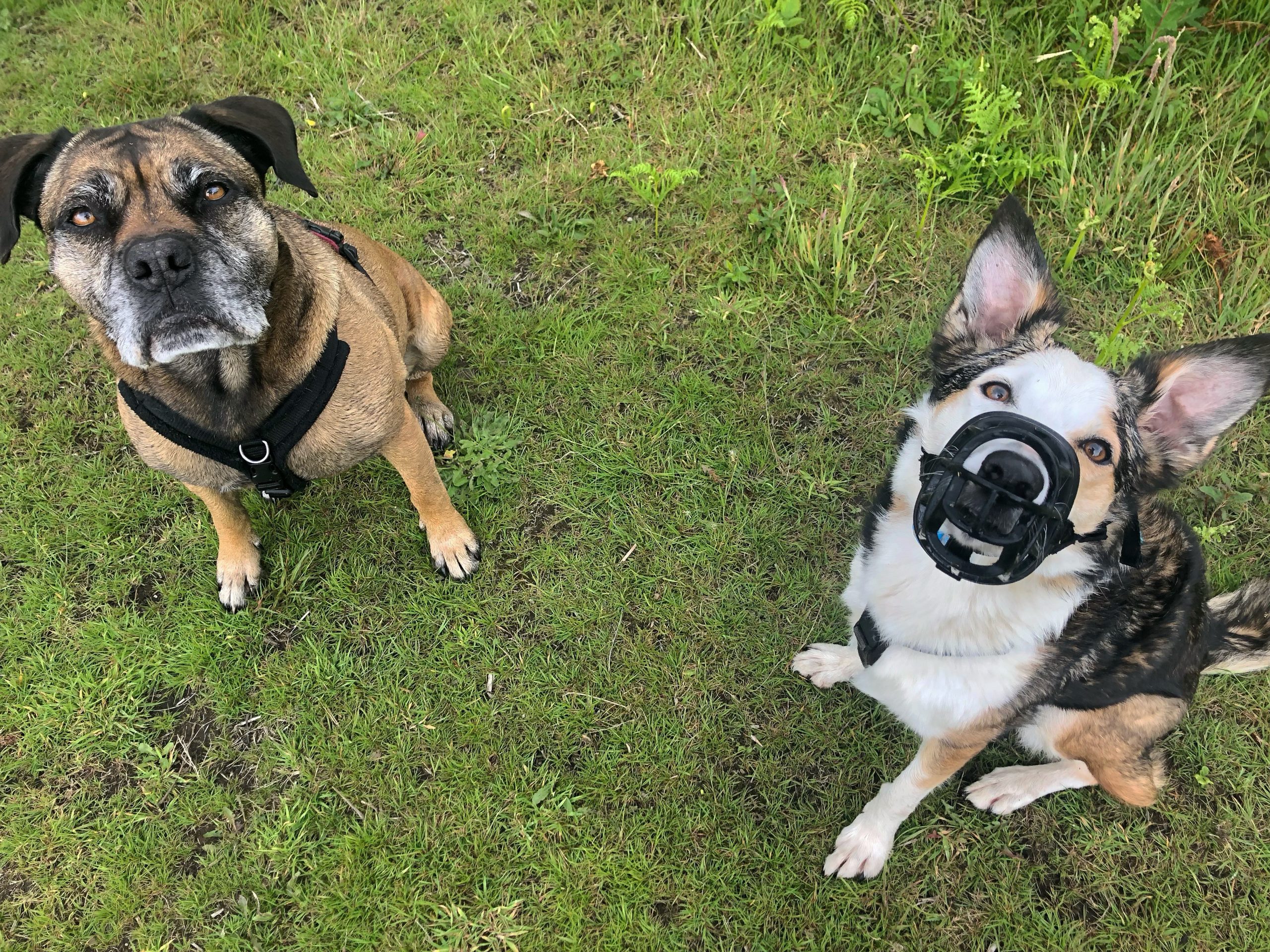Trigger Stacking
Trigger stacking, is defined as the accumulation of stress due to exposure of multiple triggers, either simultaneously or close enough in time that the dogs stress levels have not returned to normal.
This is something both humans and dogs can experience whilst navigating their every day life. Which is especially relevant as we now find ourselves in more ‘normal’ circumstances, which after a year of isolation can easily lead to overwhelm.
Trigger stacking can result in an over reaction to something a dog may ordinarily be able to cope with. A trigger may be something that dog is fearful of, such as noises, the vet, traffic, skate boards, other dogs, people, bikes etc. Therefore on a normal walk, they may be able to walk past a dog, car and a bike, but when they see another dog, may react. Or for example, a dog may be within a home with a child interacting with them. They may normally be calm around children, yet that day they had already been feeling stressed because of building work going on. After a loud bang, the child reaches out to the dog and the dog snaps.
If the dog experiences high levels of stress, this can remain in the body for a number of days. Therefore, being aware of what your dog has been exposed to, and what they find stressful can help you provide appropriate exercise and care for your dog.
All dogs have a threshold in how much stress they can cope with, and will give clear signals of their discomfort in their body language and behaviour. The ladder of canine aggression provides clear examples of how your dog is communicating their discomfort to you, which starts with yawning, lip licking, or turning their head or body away. Their ears may be pinned to the back of their head, their tail tucked or evidently holding their body weight in their hind quarters, ready to flee if needed. If these signals are not listened to, the dog may freeze or tense up, with a hard stare at whatever is causing stress. This would then lead to a growl, air snap and then a bite. Obviously the whole body of the dog must be taken into consideration when interpreting how your dog is feeling, whilst also being aware of any other influencing factors, such as levels of arousal.
Arousal in dogs is known to be the state of physical or emotional alertness and their readiness for action, therefore a dog who is chilling out will have low arousal levels compared to a dog who is waiting for a tennis ball to be thrown. Arousal levels increase adrenaline and stress hormones in the brain, ultimately increasing excitement and/or reactivity to the environment. This can make it difficult for a dog to regulate their behaviour and is not the ideal state for learning.
For excited dogs an increase in arousal may lead to hyperactive behaviours such as mouthing, humping, jumping up, barking, lunging etc. Where as high arousal level in reactive dogs could make it more likely they go straight to extreme reactions of lunging, growling, air snapping or biting.
This is why it is important to help our dogs decompress throughout a walk, so that they remain under their stress threshold and can enjoy their walk
For example, instead of letting your dog get high as a kite by throwing a ball for them to chase over and over, you could ask your dog to wait, whilst you hide the ball, then ask them to seek it out. This engages their nose and slows their movements down, inducing calmness and reducing stress and arousal.
Scent detection is perfect for a walk, engaging their brain, letting them use their main sense – which in the long run supports your dogs well-being, rather than the dog constantly being in high states of stress or arousal. Another great exercise to help your dog decompress is setting up a treasure hunt at home with their dinner. This way your dog has to actively work for their food, whilst preventing the dog from being exposed to potential triggers outside of the home. Therefore, for dogs that have high stress levels, could benefit from having a day off from walking if you cannot walk somewhere without the triggers present.
When you start to stay aware of how your dog is being trigger stacked and provide opportunities of decompression or navigating situations to help your dog remain under threshold, it will help your dog relax, enjoy their walk and ultimately move towards changing undesirable behaviours.

